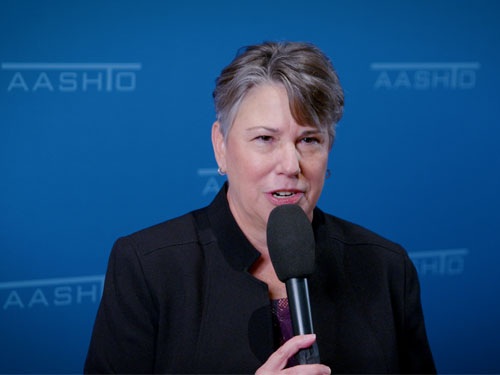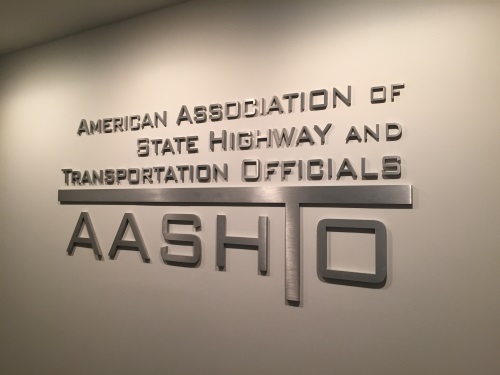The American Association of State Highway and Transportation Officials recently sent two letters – one to the Council on Environmental Quality or CEQ and the other to the Federal Communication Commission – regarding recently proposed regulatory initiatives.
[Above image by AASHTO]
In its March 31 letter to the CEQ, AASHTO commented on the “National Environmental Policy Act (NEPA) Guidance on Consideration of Greenhouse Gas Emissions and Climate Change” issued by the agency in January.

“Unlike previous comments on prior versions of this guidance, AASHTO and its member departments have not reached consensus on whether the social cost of greenhouse gases (SCGHG) analysis should be used in NEPA documents,” the group said in its letter.
“Some of our members are supportive of the SCGHG approach proposed in the interim guidance, and they encourage CEQ to move forward with finalizing [it],” AASHTO noted. “Other members are opposed to the use of SCGHG benefit analysis [to add another] level environmental review and recommend CEQ not implement the guidance, or at the least make changes according to these recommendations.”
From its perspective, AASHTO agreed that CEQ, along with the U.S. Department of Transportation and other federal agencies, can play a “useful role” in clarifying the appropriate methods for addressing GHGs.
“However we have concerns about the interim guidance [and] we encourage CEQ to modify or clarify the guidance to ensure that GHG analyses in NEPA documents are useful and based on sound science,” the organization pointed out.

Meanwhile, in its March 30 letter to the FCC, AASHTO petitioned the agency to reconsider its proposed “Improving Public Safety Communications in the 4.9 GHz (gigahertz) Band” rulemaking issued in February.
“AASHTO urges the FCC to reconsider the decision to 1) establish a national spectrum plan for the 4.9 GHz band, 2) appoint a single ‘Band Manager’ to administer frequency coordination, 3) incentivize use of the latest commercially available technologies, and 4) facilitate secondary uses beyond public safety,” the group said in its letter.
“The 4.9 GHz band must be preserved for use by state and local agencies to enhance public safety, AASHTO stressed.
“Moreover, the nature of state and local agencies and safety applications necessitates a lighter regulatory touch than would be appropriate for other parts of the spectrum,” the group said. “We encourage the FCC to heed the concerns of public safety agencies and prioritize regulatory changes that enable state DOTs and our partners to save lives.”
AASHTO’s position on the 4.9 GHz wireless communication spectrum mirrors its push to preserve the 5.9 GHz band from being re-allocated to non-transportation uses three years ago.
That effort ultimately failed after the District of Columbia Circuit Court dismissed a lawsuit filed by AASHTO and the Intelligent Transportation Society of America in August 2022.
 Top Stories
Top Stories
USDOT Makes $1.5B Worth of BUILD Grants Available
December 19, 2025 Top Stories
Top Stories

